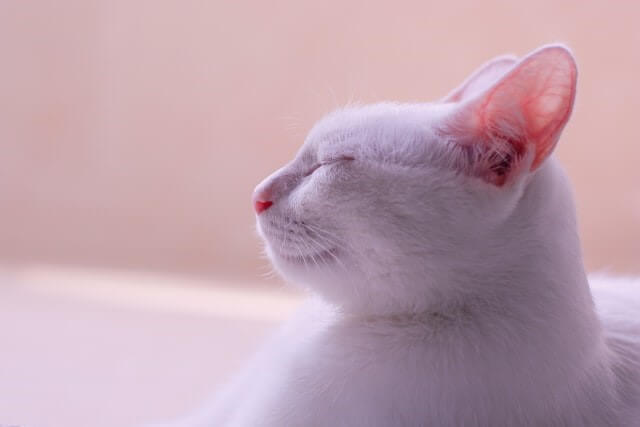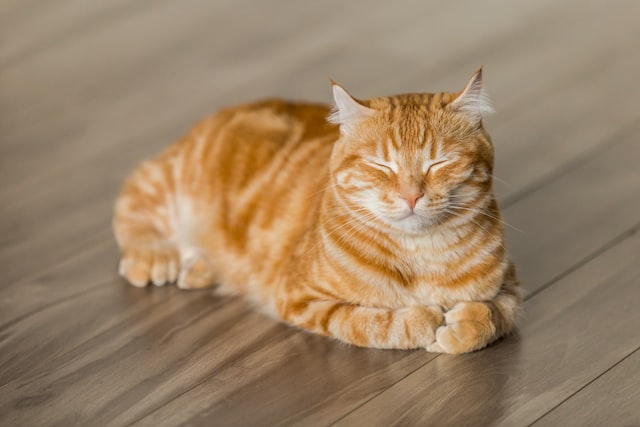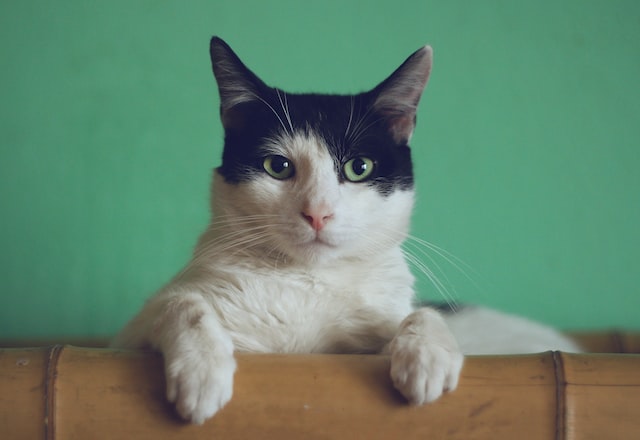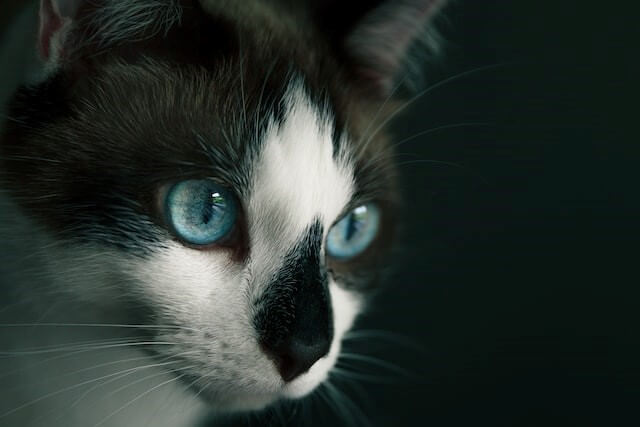Cats blink at you all time and it could mean several things. Cats mainly meow to communicate with their humans, but sometimes they also use their eyes.
Sometimes cats give you a kitty kiss – which is a slow eye blink. This is usually towards humans and other animals or cats they trust. But this is very different from excessive blinking and could be a sign of dry eye syndrome, also called KCS.
SAVAVET is a leading manufacturer of small animal pharmaceuticals that offers differentiated products across therapy areas that meet the current unmet medical needs of Veterinarians. SAVAVET’s Visio Tears is an effective solution for KCS in cats. Let’s find out what this means for their treatment.
What does this mean?

Firstly, excessive blinking from your cat is a sign that there is irritation or pain in the eyes. It is not normal. If the cat is constantly trying to rub its paw on the eyes, that is also a sign that something is not right.
Redness, dryness of the eye and tearing from the eyes can also be noticed.
–> SEE ALSO: Why Cats Make Amazing Companions?
What could be the reason?
There could be a scratch in the cornea, or an infection in the eye. It’s best to get the cat checked by a vet for these problems. If there is no noticeable infection, another reason could be dry eye syndrome, also called, Keratoconjunctivitis sicca (KCS).
What is Dry Eye Syndrome (KCS)?
Dry eye syndrome is simply because the cat’s eye gets abnormally dry and causes inflammation of the cornea. The cat’s lacrimal gland produces tears, which consists of a combination of mucous, water and oils.
When the lacrimal gland does not produce enough tears, it causes the situation of dry eyes. This is a condition that needs treatment for a better and comfortable life for your furry friend.

Symptoms of Dry Eye Syndrome:
- The cat blinks excessively or keeps the eyes shut.
- An inflammation in the form of redness can be observed on the outer eye layer.
- The cat’s eyes look a bit dull.
- The eyes also produce cloudy, yellow, green or white mucous as a discharge.
- The cat may also squint often as a sign of discomfort.
- It may also use paws to scratch the eye due to irritation.
Why does my cat have KCS?
There can be a number of reasons why your cat has developed Dry Eye Syndrome. Conjunctivitis in cats however, does not depend on the breed or age of the cat. But you can take a look at the following possibilities:
- If your cat has had a recent surgery involving anaesthesia, it may have temporarily reduced tear function.
- Bacterial infections like chlamydia can cause this.
- The main cause is usually infection by the feline herpes virus.
- If your cat has been exposed to radiation during radiographs or radiation therapy, a direct beam to the eye may have caused this.
- Immune diseases that affect the lacrimal gland can also lead to reduced tear production. This is a genetic condition.
- Neurogenic KCS is also a situation where an inner ear infection affects the nervous system.
Can I ignore my cat’s Dry Eye Syndrome?
It is advised to get medication for dry eye syndrome because the condition causes a lot of pain and irritation for your dear pet. Cat eye infection treatment is also inexpensive if treatment starts at an early stage.
–> SEE ALSO: Pets, Parasites & You
Moreover, constant scratching may also cause scarring to the cornea, leading to reduced vision. In extreme cases this may also lead to blindness.
Cats with KCS can also live a comfortable life if you monitor appropriately and administer medication at intervals.
How can you safely diagnose Dry Eye Syndrome?

It is always best to approach a veterinarian doctor to confirm the condition in your cats. The doctor will consider the following tests:
- An eye examination along with a thorough physical check up. Share details of the cat’s health history and medical records, if any.
- A Schirmer Tear Test (STT) may be used by the doctor to measure the rate of tear production. A special strip of paper is put inside the cat’s eyelid and held in place for 60 minutes for this test.
- Corneal staining may also be performed as a test to check for further bacterial infections.
Treatment for Dry Eye Syndrome
It is not possible to permanently treat dry eye syndrome. Rather, with proper care and medication, you can keep the symptoms under control and reduce your pet’s discomfort.
The medications used for Dry Eye Syndrome aim to stimulate production of tears in the eye and replace the tear film that does not allow the cornea to get damaged. So, a doctor may consider the following medication:
- Cyclosporin: this is used in case your cat’s symptoms are from an auto-immune disorder. It suppresses immune destruction so that tear production gets better.
- Tacrolimus: This is a second option in case the cat’s condition does not show improvement from treatment with cyclosporin. This is also an immune disorder drug.
- Pilocarpine: If the syndrome is triggered by a problem in the nervous system, this drug is used.
Other options are also available:
- You may be asked to administer an artificial tear solution every few hours depending on how serious the situation is.
- Anti-inflammatory medication can also help reduce the inflammation of cornea to treat a secondary infection from scarring.
- You can soothe the cat’s pain by gently cleaning the eyes multiple times daily with a warm, wet and clean cloth.
- You can also use eyedrops that can help lubricate the eyes. Visio Tears by SAVAVET is an effective medication that helps soothe and lubricate the eye and enhances the stability of the tear film.
- Suppose your cat does not permit or respond to any of the medications mentioned above, surgery may be performed by a certified surgeon to reposition the salivary duct and let is secrete saliva into the eyes. The risk associated with this procedure is also considerable, which is why this is only a last resort.

It can be disheartening to know that your cat has a chronic condition that is painful. However, with lifelong therapy and careful monitoring and support from your part, your cat can have a pain-free life too.
With more developments for this condition, dry eye syndrome is no longer a hopeless condition, especially if diagnosed early.
SAVAVET’s Visio Tears is an effective medication that can help your feline friend live more comfortably with Dry Eye Syndrome without experiencing the pain associated with it.
As long as you help your cat follow proper medication as prescribed, combined with occasional visits to the vet to see the progress of medication, your cat can have pretty much a pain-free, normal life.
–> SEE ALSO: How to Improve Your Senior Pet’s Quality of Life?
